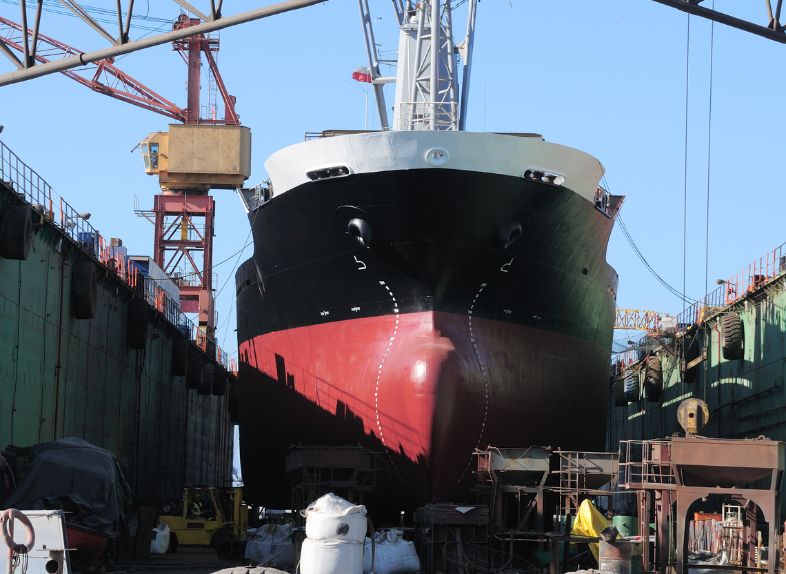Drydock Marina
Dry Docking Paint
URSA Associates stands as a reliable supplier and distributor of Dry Docking Paint, recognizing the pivotal role this maintenance phase plays in a ship's lifecycle. With a commitment to quality and performance, URSA Associates offers a comprehensive range of coatings meticulously designed to protect vessels during dry docking, ensuring their continued operational efficiency and longevity.

Considerations for Dry Docking Paints
- Antifouling Properties: Antifouling paints play a vital role in preventing the growth of marine organisms on a ship's hull, preserving its hydrodynamic efficiency and fuel economy.
- Corrosion Protection: Coatings resistant to corrosion are indispensable for safeguarding a ship's hull, particularly in saltwater environments, thus protecting the metal structure from deterioration.
- Compatibility: The compatibility of paints with existing coatings is crucial for ensuring proper adhesion and performance of the paint system, including the ability to apply them over old layers.
- Dry Time: Quick-drying paints are preferred to expedite the dry docking process, leading to shorter downtime for the vessel and enhanced operational efficiency.
- Environmental Regulations: Adherence to environmental regulations regarding the use of antifouling paints containing biocides is imperative, as many regions impose restrictions on their usage to mitigate environmental impact.
- Durability:The durability of paints significantly impacts the extended protection of the ship's hull, contributing to reduced frequency of dry docking and maintenance.
Types of Dry Docking Paints
Antifouling Paints:
- Copper-Based Antifouling: Contains copper compounds to deter marine growth, including cuprous oxide-based paints.
- Biocide-Free Antifouling: Formulated without traditional biocides, utilizing alternative technologies to prevent fouling.
Primer Coatings:
- Epoxy Primers:Provide exceptional adhesion and corrosion resistance, serving as a base for subsequent coatings.
- Zinc-Rich Primers: Contain a high zinc dust percentage for enhanced corrosion protection, particularly for steel structures.
Barrier Coatings:
- Epoxy Barrier Coatings: Act as protective barriers against water and chemicals, effectively preventing corrosion.
Topside Coatings:
- Polyurethane Topcoats: Offer UV resistance and aesthetics for above-water areas, delivering a glossy and durable finish.
Specialty Coatings:
- Propeller Coatings:Specialized coatings for propellers to reduce friction and enhance efficiency.
- Boot Top Paints:Applied to mark the waterline and enhance the vessel's appearance.
Application Process
- Surface Preparation: Thorough cleaning and preparation of the hull surface by removing old coatings, rust, and contaminants.
- Priming: Application of suitable primers to create a foundation for subsequent coatings, enhancing adhesion and corrosion resistance.
- Antifouling Application:Application of antifouling paints to the underwater hull to prevent marine growth, following manufacturer recommendations.
- Topside Coatings: Application of topside coatings to areas above the waterline, providing protection and aesthetic appeal.
- Quality Control:Thorough inspections to ensure proper application of coatings, adherence to dry times, and compliance with specifications.
Choosing the right combination of dry docking paints and following proper application procedures are crucial for maintaining the integrity and efficiency of a ship's hull during its dry docking period. Adhering to industry standards, manufacturer guidelines, and environmental regulations is essential for a successful dry docking process.
Enquiry Now